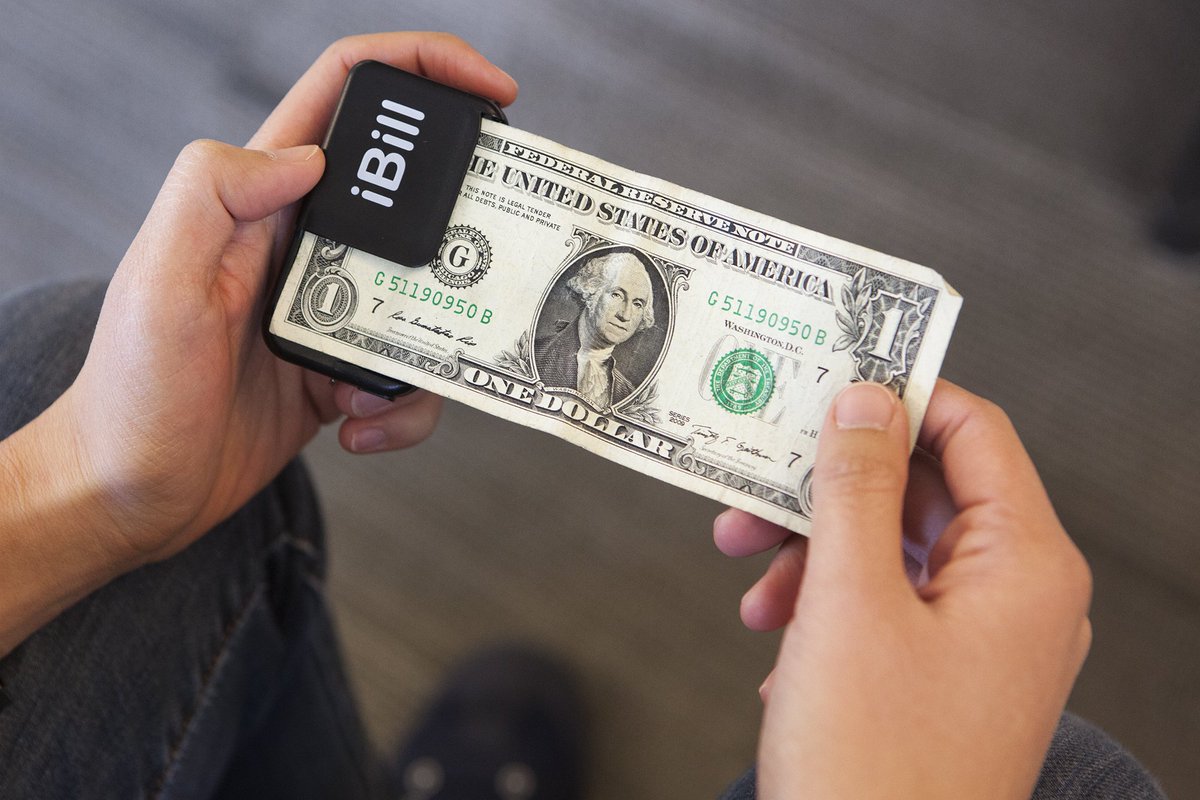How do blind people figure what kind of dollar they're being handling? After all, aren't $1 and a $20 bills all the same size? You may be surprised to know that every major currency issuer in the developed world has found a way to solve this problem—except the US. (1/5)
In the United Kingdom, like in many countries, bills vary in length, with higher bills naturally being longer. It's probably slightly too subtle for most people to notice, but it's immediately obvious to a blind person who knows what to look for. (2/5)
Many other currencies, like the Euro, combine length variation with intaglio printing—essentially, raised numbers that you can easily feel. Again, too subtle for most people, but a lifeline for the blind. (3/5)
Similarly, the Canadian incorporates tactile marks that signal the bill's value. Slightly more opaque than intaglio printing, but likely a familiar mechanism for folks used to reading brail. (4/5)
In the US, we've solved this problem by...well, we haven't really. The Bureau of Engraving simply mails the blind a little AAA battery-powered "iBill" device that they must used to scan bills. Despite decades of promises, we still don't have an accessible currency. (5/5)
Anyway, sorry for all the typos, and if the Bureau of Engraving and Printing is finally releasing a bill with a tactile element, do share. I've been casually following this issue for a decade or so and they've been promising accessible notes since I got into the issue.
@mnolangray There couldn't be a more fitting caricature of the value America places on making up impractical solutions for profit vs the value of disabled people's lives
@mnolangray Oh christ of course we would come up with a high tech and PITA “solution” to something with a clear and straightforward solution everyone else is already using. 🤦🏼♀️
@mnolangray Is it still the vending machine lobby holding this up? Because at this point anyone with a vending machine that doesn’t take cards should be bankrupted anyways.
@mnolangray The government hasn't made free official apps (for iPhone and Android) to identify bills using the phone's camera? Seems like low-hanging fruit.
@mnolangray There are luckily some apps these days that can scan currency, but that does necessitate that someone have a smart phone and can use it to do so. It's not as helpful for those with, say, age related macula degeneration who are used to being able to read their own money.
@mnolangray Genuine question, what's the status of electronic payments in the US? I'm in the UK and especially after the pandemic started I can count on the fingers of one hand how many times I had to handle bills at all.











